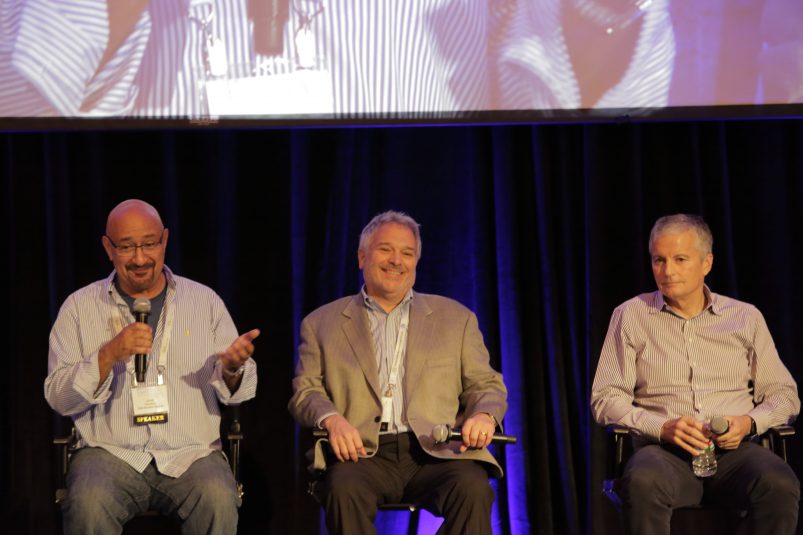LiveTV:LA: Sports Producers Weigh In on Adapting to Evolving Roles
Story Highlights
Live sports productions have evolved quite a bit in the past few decades. Gone are the days when a producer had only one production — and one screen — to consider. Now a producer’s job begins hours before the athletes hit the field, and the event lives on on multiple platforms long after they’ve left the stadium. At last week’s LiveTV:LA, three producers representing a wide variety of sports events discussed how their roles have changed, how they juggle new elements and multiple screens, and what they believe makes a compelling live sports production.
“I produced my first NFL game 35 years ago. Things have changed dramatically over 35 years,” said John Faratzis, CEO/EP, Second Screen Sports. “I witnessed an incredible transition over the course of my career, where the pregame integration and postgame expectations and all the shoulder-programming responsibilities have expanded. Also, the internet content that you’re expected to have.”
According to Larry Meyers, who previously served as VP, content/executive producer, Spectrum (formerly Time Warner Cable Sports), producers must realize that the stories that take place before, during, and after an event do not belong solely to the linear telecast. Fans can tap into their favorite team’s games through a variety of digital platforms and social-media channels. As a result, producers should learn to leverage technology and find ways to benefit from digital distribution by using digital channels to serve the needs of the hard-core fans and free up the linear telecast for other content.
“Technology allows you to be at site and to be talking about the event in great detail in ways that you couldn’t do before,” said Meyers. “If you want to sit there and shoot batting practice on the linear network, that’s fine; if you want to sit there and shoot batting practice on digital distribution while you’re doing pregame on the linear network, maybe that’s better. But the key to all of that is to make it meaningful. If you’re going to attract an audience an hour before the show, it’s still going to be the core. The closer you get to the event, the broader the audience is going to be in terms of interest in the game and the teams.”
It’s also a matter of building relationships, he continued. Getting fans to tune into pre/postgame coverage every day requires not only building a relationship with the team in order to have access to athletes but also building a relationship that keeps fans invested in the team day in and day out.
For Fox Sports’ coverage of FIFA World Cup, building relationships with fans so that they tune in before and after matches is essential to the network: because FIFA does not allow any additions or enhancements to its match coverage, the only place Fox Sports can add its take on the tournament is through its studio coverage.
“FIFA has a philosophy that, whether you’re in Duluth or Doha, they want people seeing the same game coverage, the same replays, the same camera angles. So what you are constrained and confined to doing, in terms of really putting your mark on the telecast, is the studio program,” explained David Neal, executive producer for FIFA World Cup, Fox Sports. “We are exponentially growing the number of studio hours we’re going to do surrounding the 2018 World Cup in Russia. Partly, it’s a practical exercise because the only place you can run commercials is the studio, but it’s also the only way you can put your signature, your fingerprints on what makes you different as a broadcaster.”
The panelists also touched on how improvements to the viewing experience, like UHD and HDR, will affect how they produce sports events. But, said Faratzis, from a producer perspective, better picture quality pales in importance to those tools that allow producers to better tell the story.
I’m in favor of any technology that helps me better understand what’s taking place,” he said. “A simple telestrator that shows me why that person was out of position or where they should have been, I’m happy with that. I’ve always been more of a story guy than I have been a technology guy. … I’ve always been a fan of telling the story more than driving it with technology.”

